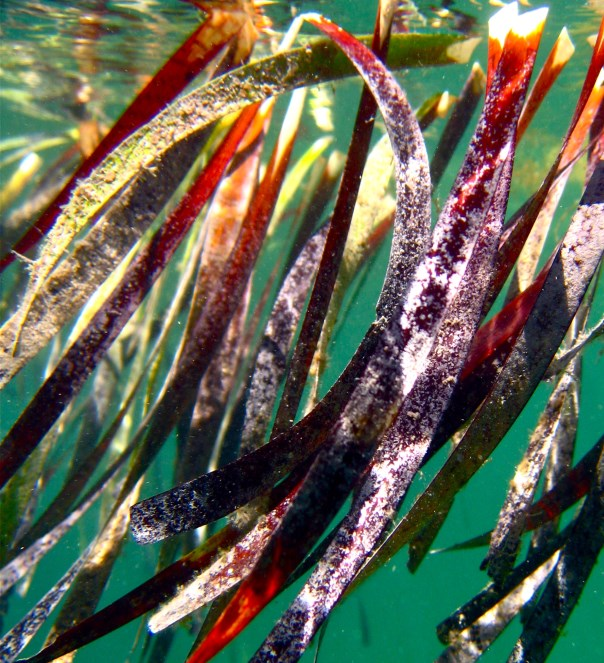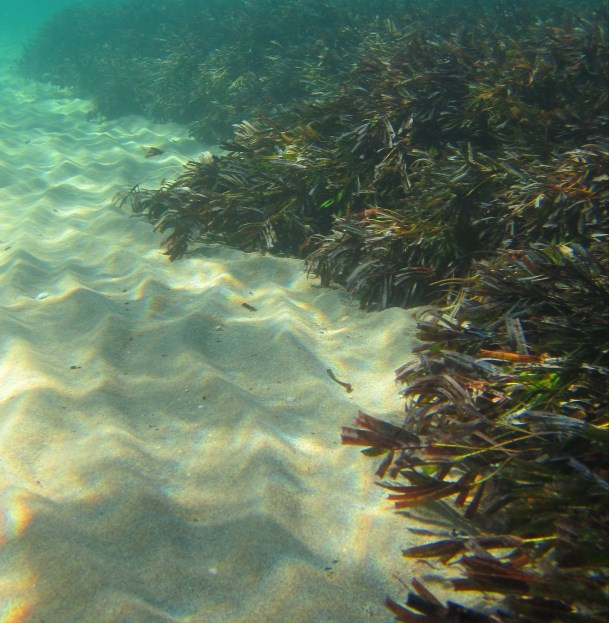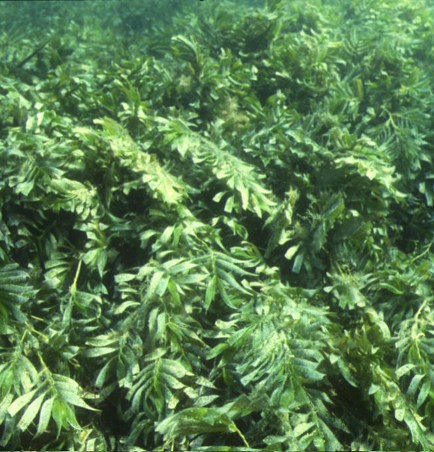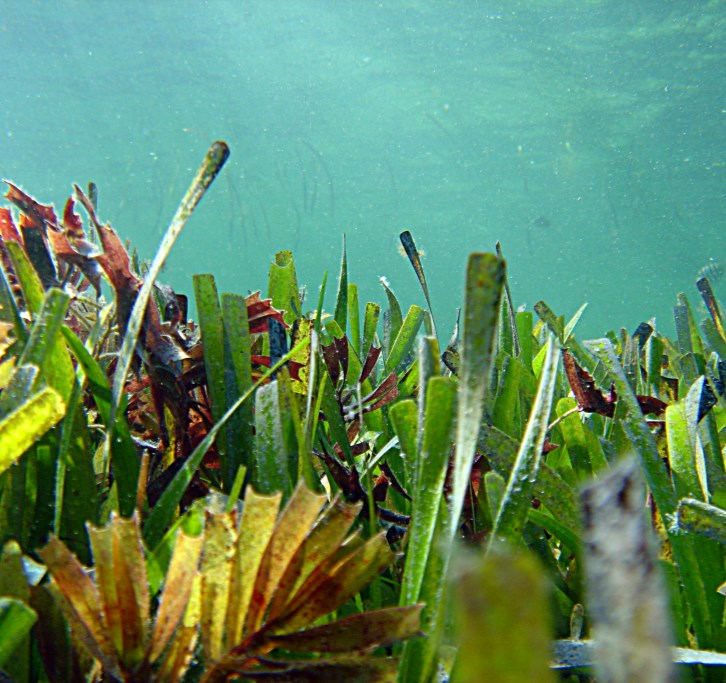Seagrasses
Seagrasses of Shark Bay
Description

Seagrasses are submerged flowering plants. Shark Bay’s seagrass meadows grow in lines parallel to prevailing currents in waters largely protected from oceanic currents. Lots of light penetrates these low rainfall areas resulting in clear, calm, shallow waters. This makes for ideal seagrass growing conditions capable of producing around eight million tonnes of leaf material each year.
Habitat

Temperate and tropical waters meet in Shark Bay creating conditions suitable for species from each climate. In places nine species can be found in one square metre, although the most abundant is Wireweed (Amphibolis antarctica), which covers nearly 3,700 km2 . Ribbonweed (Posidonia australis) covers about 200 km2 and about 500 km2 is covered by Paddleweed and other species.
Growth

Wireweed has separate male and female plants. Pollen drifts on the current to female flowers. Seedlings are attached to the female with tiny grappling hooks before becoming rooted in the sea floor. The flowers of Ribbonweed are bisexual and self-pollinating. Floating fruits eventually split open and release seeds which sink and germinate in the sand.
Distribution

Shark Bay World Heritage Area is home to 12 of the world’s 60 seagrass species. The Wooramel seagrass bank stretches 130 km along Shark Bay’s eastern coastline and at 1030 km2 is the largest seagrass bank in the world.
Status
In 2003 the United Nations calculated 15% of the world’s seagrass meadow had disappeared in the previous 10 years, largely due to human activities along coastlines. Surveys since 2012 indicate that seagrass is declining in Shark Bay due to extended periods of higher than average water temperatures in 2011.
Fact sheet
SHARK BAY
World Heritage



